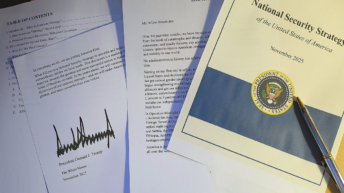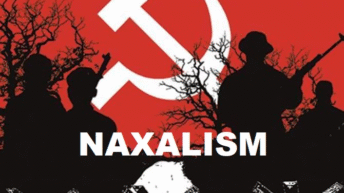
In the recently concluded Canadian elections, the Liberal Party, led by Mr. Mark Joseph Carney, emerged as the winner. With this victory, the Liberal Party has secured its fourth consecutive term in the 45th federal elections in Canada. However, with 169 seats, the Liberals will form a minority government, falling just short of the 172 seats required for a majority in the 343-member House. Thus, they will need the support of the National Democratic Party (NDP) or some other party to pass legislation, approve the budget, or avoid defeat in a confidence vote, the loss of which would result in a fresh election.
The Conservatives were widely regarded as the frontrunners in this election but fell far short of the halfway mark, winning 144 seats. They won the 2011 elections, securing 166 seats to form a majority government with a 39.6 per cent vote share. At that time, the Liberals finished third with 34 seats, significantly behind the NDP, which came in second with 103. However, in the elections held in 2015, 2019, and 2021, it was the Liberals who surged ahead. Surprisingly, in both the 2019 and 2021 elections, the Conservatives had a larger vote share than the Liberals, but that did not translate into winning more seats. Canada’s electoral system is modelled on the British one in which a majority of the popular vote does not necessarily translate into a majority of seats.
The 2025 election unfolded against the backdrop of challenging Canada-U.S. relations on one hand and Canada’s housing, immigration, and economic problems on the other. U.S. President Donald Trump took an increasingly aggressive stance, imposing tariffs and repeatedly threatening to annex Canada as the 51st state of the U.S. In one of his social media posts, Trump claimed that annexation would bring massive economic and military benefits. “Good luck to the Great people of Canada,” he posted on Truth Social.
Prime Minister Justin Trudeau’s popularity had plummeted in Canada, forcing him to resign. In March 2025, housing prices remained high, with the national average home costing around $678,000. Immigration continued to be one of Canada’s key challenges. Similarly, low-income Canadians lacked the resources to ensure food security, as food costs had risen since the COVID-19 pandemic. Therefore, economic worries, including food prices and job security, were important factors shaping the Canadian election in 2025. Canadians were looking for a leader to end political turmoil at home while dealing with an intransigent neighbour. It was Mark Carney, a career banker chosen to lead the party, who succeeded in tilting the balance omce again in favour of the Liberal Party.
Mark Carney, with a wealth of experience from his tenure as governor of both the Bank of Canada and the Bank of England, emerged as a steady and determined voice. It is interesting to note that he earned his PhD in economics from Oxford University in 1995, focusing his thesis on the ‘impact of domestic competition on national competitiveness’—a topic relevant for Canada in contemporary times while dealing with the Trump administration. His firm stance on Canadian sovereignty against the belligerence of President Trump, who often referred to Canada as the 51st state of the USA, earned him voters’ support. Upon winning the election, he said in his acceptance speech, “As I’ve been warning for months, America wants our land, our resources, our water. President Trump is trying to break us so he can own us. That will never happen.” He reminded Canadians that defending sovereignty would not be easy and might require sacrifices. The election, shaped by both deteriorating U.S.–Canada relations and growing issues at home, ultimately became a choice about which candidate Canadians trusted more to lead them in uncertain times.
The Conservative Dilemma
Until February 2025, a Conservative victory seemed inevitable. Yet the 2025 results mark the third time the Conservatives have lost the election. Their defeats in the 2019 and 2021 elections were particularly jarring, as they had a larger vote share in both elections than the Liberal Party. In 2019, they secured 34.3 per cent of the popular vote compared to 33.1 per cent obtained by the Liberals. In 2021, they received 33.7 per cent against 32.6 per cent for the Liberals.
In the recently concluded election, the Conservative Party improved its performance, increasing its tally by two dozen seats from the previous election and achieving the highest percentage of votes since 1988. However, Conservative Party Leader Pierre Poilievre lost his parliamentary seat to a Liberal candidate. Unlike Donald Trump, Poilievre is a traditional conservative who believes in small government and low taxes; however, his mirroring of Trump in terms of language and appeal alienated many voters, even though he attempted to distance himself from Trump after the trade war erupted. Poilievre’s criticism of Trump came too late, as he focused on attacking the unpopular Liberal government led by Trudeau. This could be another reason why progressive voters coalesced around the Liberals.
Collapse of the NDP
In this election, the Liberals and the Conservatives received more than 40% of the vote share, making it a two-way contest. This marks a shift in Canada’s electoral landscape, with smaller parties being squeezed out. The New Democratic Party (NDP), once a significant political force in the political landscape, won only seven seats, failing to qualify for official party status, which requires a minimum of 12 seats. The NDP leader, Jagmeet Singh, was defeated, coming third in his parliamentary seat, behind the Liberal and Conservative candidates. Jagmeet Singh, a vocal critic of Indian Prime Minister Narendra Modi and the Rashtriya Swayamsewak Sangh (RSS) and a staunch supporter of the Khalistani movement, has led his party to an uncertain future due to his decision to prop up the unpopular Trudeau government. The NDP’s vote share also collapsed from 18% in 2021 to 6% in 2025.
Implications for India
The newly elected Prime Minister, Mark Carney, is an outsider with no political experience but he has a wide network of powerful contacts and colleagues across the financial world. He is also seen as a loyal supporter of Canada’s statute as a Commonwealth member-state, whose sovereign is the British monarch. His victory reflects the mood of the electorate, weary of the political drama and wanting stability and competence to address complex challenges such as the cost of living crisis and the tense relationship between Canada and the US. This presents an opportunity for him to improve the bilateral relationship between India and Canada, which was strained under Trudeau, particularly due to the support given by his government to Khalistani elements in Canada. This was perhaps dictated by his party’s dependence on the NDP, led by Jagmeet Singh, to stay in power. Relations soured further when Trudeau accused India of the killing of Hardeep Singh Nijjar, a Khalistani activist. Carney has said that the relationship with India is ‘incredibly important,’ which augurs well for resetting the ties.
With just seven members in the House of Commons, the NDP is no longer a “recognised party” for parliamentary proceedings. This means the party is no longer eligible to receive public funding for research and staff. The party also loses certain parliamentary privileges and procedural rights, which impact its public perception and influence. However, the Carney government is a minority and will need outside support.
Given the seat distribution, the Liberals may seek support from the Bloc Québécois or the NDP to achieve a working majority on key votes. They will likely seek support from the NDP as the Bloc Québécois seeks independence. Whether the Carney government will kowtow to the demands of a considerably weakened NDP and support Khalistani elements remains to be seen. On that issue rests the future of India-Canada ties.






Add comment